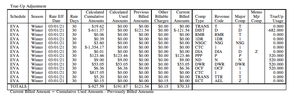h2ofun
Active Member
Yea, I know. For this winter, first it was SO mild, and I kept the house cool since I had no idea what would happen. Next winter I will just keep the house warm to whatever the wife wants, which still may be "cool", and if I have to pay, so be it.Joking aside, if your NBCs were wiped out from whole credit, then you generated way more than you used which increases your ROI substantially. For PG&E, anything less than $120 net positive usage will essentially be wasted.
Since I bought none of this stuff with ROI thoughts, it is just a game. Meaning, when I put my house up for sale, I can tell buyers it can basically be off grid. All the folks who have seen my setup have said they have never seen a home with so much flexibility. Worth the money? All I need is one with deep pockets.




